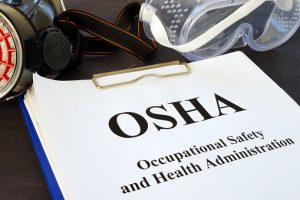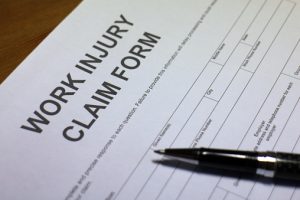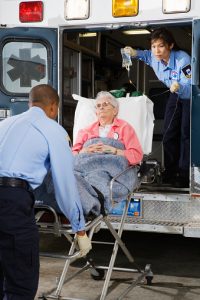Survey Highlights PPE Challenges for Women in Construction

When PPE doesn’t fit right, it can do more harm than good. For women working in Rhode Island and Massachusetts, ill-fitting PPE is a common workplace hazard—especially on construction sites.
Ill-fitting safety equipment can do more harm than good
PPE, or Personal Protective Equipment, encompasses any specialized gear or attire utilized to safeguard individuals from potential hazards or risks in various environments. Examples of PPE include:
- Safety boots and shoes.
- Hard hats.
- Safety gloves.
- High-visibility clothing.
- Eye and ear protection.
- Aprons, trousers, and life jackets.
- Respirators.
In a recent survey of 100 women in construction, industry executives, and construction owners, almost 70 percent said that gender-friendly safety equipment is not available at construction sites. In addition, 85 percent said there is no maternity-friendly PPE at work sites. The survey highlights the pressing need to mitigate the heightened risk of injury faced by women in the construction industry.
Understanding the PPE gender gap
When the right PPE is not available to women, not only does it undermine their safety but also their comfort and productivity on the job. Improper PPE can cause injuries affecting women, such as:
- Respiratory-related injuries and disabilities.
- Overexertion, sprains, and strains.
- Wounds and bruises.
- Bone fractures.
- Eye injuries.
- Carpal tunnel syndrome, tendonitis.
- Burns.
- Respiratory system diseases.
- Skin disorders.
However, knowing the extent of the PPE problem or risk is difficult. Occasional studies shine a light on the issue. For example, one study found that women in the workplace report experiencing musculoskeletal disorders (MSDs) such as neck and shoulder pain at a rate twice as high as men. Researchers said the disparity may stem from tasks requiring women to exert more muscle effort than men or ill-fitting PPE designed primarily for men.
A study from 1996 found that women in construction labor are twice as likely as men to be fatally injured in a motor vehicle accident. Across all industries, exposure, and events that were more likely to injure women than men included overexertion in lifting and repetitive motions, falls, and exposure to harmful substances.
We fight for injured women workers’ rights
With very few exceptions – and regardless of PPE availability – women injured on the job are entitled to compensation for their medical expenses, lost wages, and possibly more. Workers’ compensation and personal injury laws generally apply to all employees regardless of gender. In Massachusetts and Rhode Island, the process typically involves reporting the injury to the employer, seeking medical treatment, and filing a claim with the relevant workers’ compensation board or agency.
However, just as women encounter discrepancies in PPE, they can also be subject to injustices in pursuing injury compensation. We can help level the playing field. At The Law Offices of Deborah G. Kohl, our workers’ compensation lawyers and work injury attorneys understand that your workplace injuries are serious and deserve maximum compensation.
If you were injured on the job at a Massachusetts or Rhode Island construction site or another type of workplace, contact us for a free case evaluation. We can explain your options for seeking lost wages and medical expenses and whether there is potential for Social Security Disability benefits and/or an injury claim or lawsuit against a third party like a subcontractor, defective parts manufacturer, or negligent driver. Contact us today so we can listen to what happened, hear what kind of injuries you’ve sustained, and explain how workers’ compensation attorney can help.

 Employers have a basic obligation to follow rules set forth by the Occupational Safety and Health Administration. These rules are designed to prevent hazardous conditions from putting workers at risk of injury or death. Unfortunately, a workers’ compensation lawyer knows that it is not uncommon for employers to fail to live up to even minimum safety standards.
Employers have a basic obligation to follow rules set forth by the Occupational Safety and Health Administration. These rules are designed to prevent hazardous conditions from putting workers at risk of injury or death. Unfortunately, a workers’ compensation lawyer knows that it is not uncommon for employers to fail to live up to even minimum safety standards. President Barack Obama has issued a new executive order (EO) called the
President Barack Obama has issued a new executive order (EO) called the  The nursing home and home health care industries are the fastest growing industries in the country as baby boomers age. Unfortunately, nurses and healthcare aids who provide assistance to seniors face significant workplace risks. From potentially violent residents to needle sticks and exposure to disease, these workers are exposed to many -on-the-job hazards. One of the biggest risks that home health care workers and nursing home staff face, however, is the risk of musculoskeletal injuries.
The nursing home and home health care industries are the fastest growing industries in the country as baby boomers age. Unfortunately, nurses and healthcare aids who provide assistance to seniors face significant workplace risks. From potentially violent residents to needle sticks and exposure to disease, these workers are exposed to many -on-the-job hazards. One of the biggest risks that home health care workers and nursing home staff face, however, is the risk of musculoskeletal injuries. Landscaping is one of the industries where teenagers are most likely to get summer jobs. Unfortunately, landscaping work can be dangerous for young people, especially if they are inexperienced and do not know how to do the work safely.
Landscaping is one of the industries where teenagers are most likely to get summer jobs. Unfortunately, landscaping work can be dangerous for young people, especially if they are inexperienced and do not know how to do the work safely. Nine people were badly hurt in an accident at a Providence, RI circus recently, leaving audiences stunned. The
Nine people were badly hurt in an accident at a Providence, RI circus recently, leaving audiences stunned. The  Accidents involving large trucks caused 697 deaths in 2012, which was an 8.9 percent increase over the number of deaths they caused in 2011. Another 25,000 people were injured in large truck collisions over the same year. These thousands of injuries and deaths could be prevented in many cases if truckers were more careful and if trucking companies followed safety rules set by the Federal Motor Carrier Safety Administration (FMCSA).
Accidents involving large trucks caused 697 deaths in 2012, which was an 8.9 percent increase over the number of deaths they caused in 2011. Another 25,000 people were injured in large truck collisions over the same year. These thousands of injuries and deaths could be prevented in many cases if truckers were more careful and if trucking companies followed safety rules set by the Federal Motor Carrier Safety Administration (FMCSA).  Rhode Island’s largest healthcare organization slashed jobs recently amidst a serious financial crisis. Jobs were
Rhode Island’s largest healthcare organization slashed jobs recently amidst a serious financial crisis. Jobs were  Over the July Fourth weekend, tenants in eight different apartments on Columbia Street in Fall River were displaced from their homes by a massive fire. The fire occurred in a building above Sagres Restaurant where at least 13 tenants were living in rental units.
Over the July Fourth weekend, tenants in eight different apartments on Columbia Street in Fall River were displaced from their homes by a massive fire. The fire occurred in a building above Sagres Restaurant where at least 13 tenants were living in rental units.